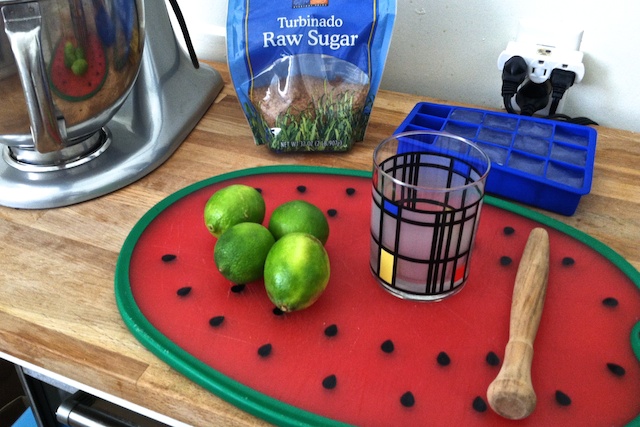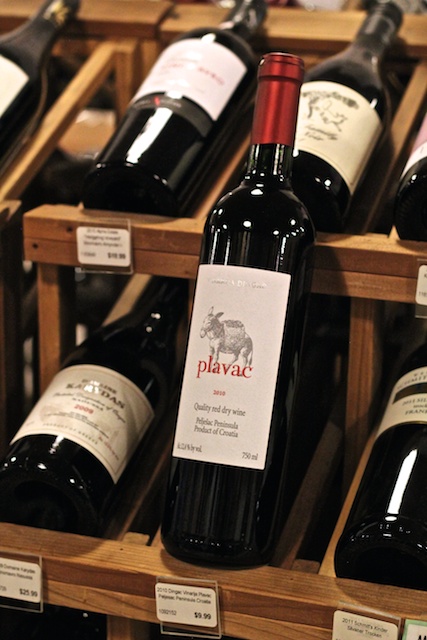Drink Your Way Through the 2014 World Cup: Day 1

As I told some of my colleagues earlier this morning, this year's World Cup at K&L is going to divide the store into two distinct groups: those who record the games at home to watch later, and those who keep track online as we work. I am definitely going to be part of the former, so that means I'll have to go all day without checking the internet, looking at incoming text messages, and participating in the discussions on the sales floor. Part of my strict adherence to avoiding the spoilers stems from the fact that World Cup soccer games are such a rarity that I want each one of them to be an exciting mystery to me. The other reason is that each game is an opportunity to drink both heavily and culturally -- to the point that you can tailor your beverages to the countries playing on the screen.
This year, with so many different forms of booze at my fingertips, I'm going to drink my way through the entire World Cup. I'm going to imbibe something different for each game; even when there are three to four games in one day. For those of you who want to play along, I'll make sure to post the menus for each day in advance just in case you want to snag some of these things for yourself. It's going to be one hell of a month for my liver and kidneys, but man is it going to be fun!
Let's start with tomorrow's opener:
Thursday - June 12th
Brazil vs. Croatia
I already wrote a bit about cachaça yesterday, so I won't go into too much detail here. To start off the World Cup in Brazil and celebrate the first game for the home country in the tournament, I think we're all pretty much obligated to drink a caipirinha. I mean, it's pretty much required, don't you think? I've got the ingredients laid out on my cutting board at home: a glass, limes, sugar, a muddler, and some ice. Now we just need the booze.

We have four pretty good choices for cachaça at the store right now. Let's go through them briefly:
Novo Fogo Organic Cachaça Brasil $27.99 - Novo Fogo is the first cachaça with a distinct sense of place. Coming from the Southern jungle town of Morretes, Novo Fogo represents 300 years of cachaça experience from an organic and sustainable distillery. Everything is used and reused never wasted. The quality of the estate grown cane is unparalleled and distillation is of free run, first press cane juice only. Needless to say this is not your industrially produced cachaça (i.e. the stuff used to power most of Brazils vehicles), although they do use the heads and tails to run their cars and power the distillery. The cane juice is distilled in small alembic pot stills, instead of the industrial column stills like 95% of the world's cachaca. Using only gravity to move the spirit, it is then rested in steel for at least a year to allow it to mature and mellow. Each bottle is hand produced from recycled glass and even the decorative neck cover is created by hand from recycled cane fiber. One of the finest cane based spirits I've tasted. Costs more than the industrial stuff, but it's in a whole different league. The depth and complexity make Novo Fogo a mixologist's dream.
Velho Barreiro Cachaca 1L $15.99 - It's not often I'm on the lookout for a new cachaca, but my good friend Val brought me this absolutely delicious, strikingly-labeled liter bottle of pure bargain-priced booze. Velho Barreiro Cachaca is only $15.99 and is briefly aged in Brazilian wood (I think oak, but as we talked about in yesterday's post, who really knows since most of them are not allowed via the TTB approval system). It's full of real rum character and should make killer drinks for those looking for a new mixer. And the price...my God!
Avua Prata Cachaça Brasil $34.99 - The very special Avua Cachaca is from one of Brasil's highest quality cachaca producers. There are essentially two types of Cachaca, industrial and artisanal. This is truly the artisanal style, hand crafted from field to bottle. Because of the small scale and seasonal nature of production, each batch will be a unique expression of the soil, sun, and stills. This is not the stinky harsh Cachaca that some many people are used to. Instead, this is clean and bright with incredibly precise aromas of fresh tropical fruits and lush floral tones. A brilliant example of why cachaca should be considered a world class spirits category.
Avua Amburana Cachaça Brasil $44.99 - Avuá is a small batch, single-sourced cachaça lovingly crafted by one of Brazil’s few female distillers. She uses a family recipe honed to perfection over three generations. The lush, crisp spirit, which offers up subtle botanical notes, is perfect for the art of mixology or simply shaking up a classic caipirinha. What sets Avuá apart from other cachacas is that it originates from cane that has been single-sourced from a farm in the rolling hills near Rio de Janeiro before ending up in an ancient alembic still in along thin valley between hills in Carmo, Brazil. Avuá Amburana Cachaça is aged in Amburana wood, found only in the forests of Latin America. Resting in this indigenous wood produces a stunning mix of warm and savory notes on the nose and palate that provides a truly unique taste experience for cocktail experimentation or sipping neat.
I'm going to cut one of those limes up into quarters, squeeze each one into the glass, then drop the piece into the glass with a tablespoon of sugar and muddle that together into a citrusy syrup. Then I'm going to pour in a little more than 2 oz. of cachaça, drop in the ice, and stir everything up.
That should get me through the first three minutes of the opening ceremony.

Once the game gets going, however, I'm going to need more than just a rum cocktail to sustain me through ninety minutes of play. It will then be time to open some dry Croatian red wine -- Plavac Mali, if you will. It's inexpensive, shows great typicity of character, and did I mention that it's inexpensive?
2010 Dingac Vinarija Plavac Peljesac Peninsula Croatia $9.99 - Grapevines have been adorning the southern slopes of the Peljesac Peninsula on the Dalmatian Coast since the beginning of mankind. The Plavac Mali grape variety thrives remarkably well in such sunny Karst soil. This one is a terrific introduction to the grape. Lingering and long, spicy and a bit rustic, it's a natural with red meat, and washes down grilled burgers exceptionally well.
I'll have to grill up some meats to go with all this wine. I haven't decided if I should do some chorizo sausages or maybe a flat iron steak? Decisions, decisions.
And this is all just for one game! Imagine this Friday night when I power through three straight games! I'll do that menu tomorrow.
-David Driscoll
